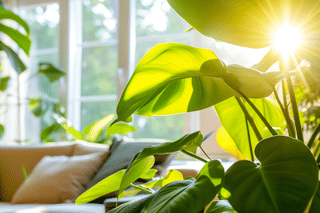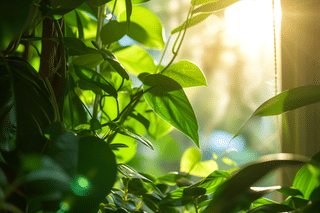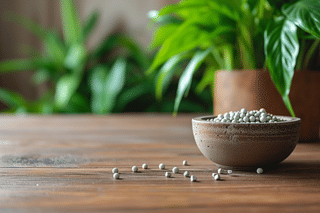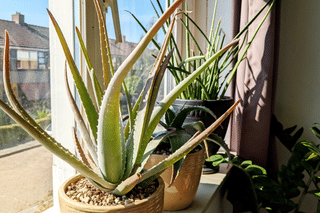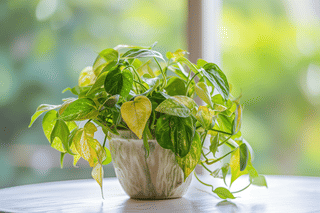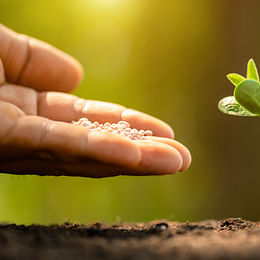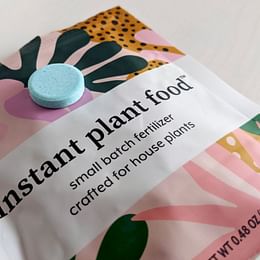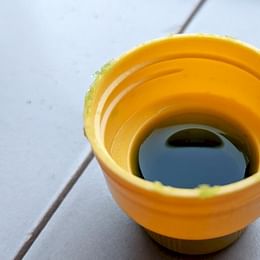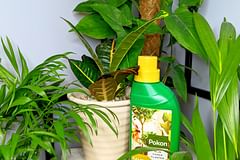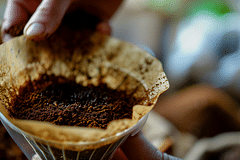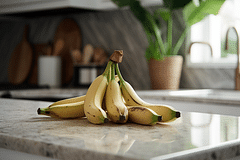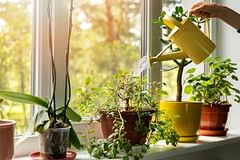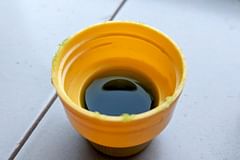Is photosynthesis important for houseplants?
Learn about the importance of photosynthesis for your indoor plants in this helpful guide. Find out how to give them enough sunlight, properly water them, and recognize signs of photosynthesis issues. Develop essential plant care skills and watch your houseplants thrive!
You might have heard of photosynthesis before, but surely thought it was only important for plants that grow outside. Well as it turns out, indoor plants also need photosynthesis to stay healthy.
In this plant guide, we're going to discover why photosynthesis is important, even for indoor plants, what plants need for photosynthesis, and how we can help our plants with this fascinating process to keep them in tip-top shape.
These are the topics we're going to cover:
Let's learn a little more about how our plants work, what they do to stay healthy, and how we can help! This plant guide is a little technical, but I tried my best to keep it as easy to understand as possible.
The science behind Photosynthesis
Photosynthesis is very important for all plants, including the ones we keep indoors. But do you know what photosynthesis is and why it's so important for the health of our houseplants? Photosynthesis is a process where plants convert sunlight, water, and carbon dioxide into oxygen and glucose.
Let's look at this a little closer because once you understand how photosynthesis works, you'll start to understand why your plant behaves the way it does, and how you can more effectively help your plant when it's in trouble.
The role of water in photosynthesis
Your plant absorbs water through its roots and transports this to the leaves. The leaves have little openings that can open and close. Through these openings, your plant evaporates the moisture in the leaves to exchange it for CO2.
When you water your plant too much, the plant is full of moisture and it won't have space for the CO2. But if you water your plant too little, the plant won't open the openings in its leaves to prevent any more moisture from evaporating.
So your plant uses the water you give it to gather CO2.
The role of sunlight in photosynthesis
After the plant has gathered enough CO2, it'll use sunlight as energy for a chemical reaction to create glucose from the CO2 and the water inside your plant. The sunlight is absorbed by chlorophyll, you can see this as a rechargeable battery for sunlight.
Every plant has different levels of this chlorophyll, which explains why some plants need 8 hours of direct sunlight, while other plants are fine with very little sunlight during the day. Plants like succulents thrive in direct sunlight throughout the day because they can store a lot of sunlight in their chlorophyll.
But sometimes your plant has gotten too much direct sunlight and gets sunburns. All this is is that the plant has received more sunlight than it can store at that moment. It's the same as when we get sunburns: our skin can't absorb any more sunlight and will start to burn.
So when the leaves of your plant don't get enough sunlight, they'll cost the plant more energy to maintain than they produce and your plant will drop the leaf to preserve energy.
Your houseplants and oxygen
So through photosynthesis, your plant produces 2 things: oxygen and glucose. Oxygen is something we need to live because it's what we breathe in. This is why you'll often hear that plants help us breathe: they're producing our breathable air all day long.
But what is glucose and why should you know about that? Glucose provides the energy the plant needs for growth and development, so you could say it's somewhat like a plant's meal preparation process!
Without photosynthesis, plants wouldn't be able to grow, reproduce, or even repair themselves after damage. That's why ensuring your houseplants get the right amount of sunlight and moisture is very important.
Glucose vs fertilizer
In the previous section, we've learned that glucose is food for our plants that helps them grow, but what about fertilizer? Fertilizer provides extra nutrients to the soil and can help improve plant growth. But... do we still need to fertilize our plants if the plant already creates its own food?
The answer is yes! Plants need the glucose they produce themselves, but they also need a few extra nutrients that you might already know: nitrogen, phosphorus, and potassium (NPK). These are nutrients they absorb from the soil. The fertilizer you use to feed your plant helps to replenish the nutrients in the soil once your plant has absorbed most of them.
How do you ensure your plants get enough sunlight?
Now that we know how important photosynthesis is for our plants and how important sunlight is for this process, let's talk about how we can make sure they get enough of it. The amount of light a plant needs depends on its specific species, but generally, most houseplants need at least 6 hours of indirect sunlight per day.
To ensure your plants get enough light, you can:
- Place them near a window that gets plenty of indirect sunlight
- Rotate them regularly to ensure all sides receive equal amounts of light
- Use artificial grow lights
Even plants that can grow in low-light conditions need some sunlight to photosynthesize. This also explains why your plants in those dark corners of your house seem to be frozen in time: they're not getting enough sunlight to make the glucose they need to grow. Once you move them to a brighter spot, you'll quickly notice they start to grow again.
If you don't have any available space near windows for your plants, you can always choose to use proper grow lights for your plants. This is not just great for those plants in dark corners, but also really useful in the winter, when the days are short and dark. You can use it as an extra light source to help your plants to photosynthesize.
How do you ensure your plants get enough water?
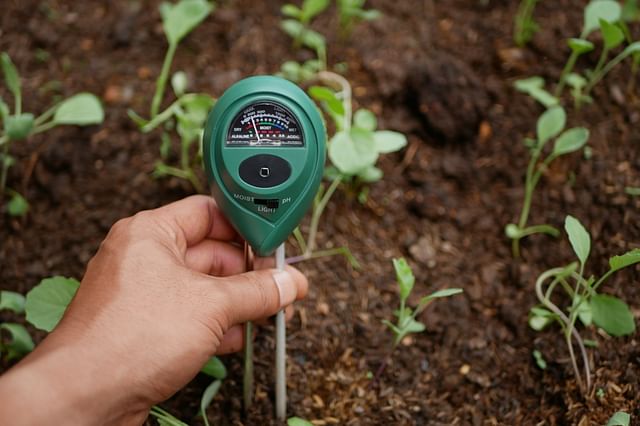
Without water, your plant wouldn't be very happy. Too much or too little water has a big impact on how well your plant can gather CO2. Watering your plant properly is easily the most difficult part of taking care of houseplants. So how do you make sure you give your plants the right amount of it?
Here are a few general tips:
- Check the soil moisture regularly. Stick your finger into the soil about an inch deep; if the soil feels dry, it's time to water. Some plants like more moisture than others, so make sure to find out what your plant likes best.
- Water slowly and evenly, making sure the entire root system gets enough water.
- Use pots with drainage holes to prevent overwatering.
If you're not confident in your watering skills, you can use self-watering pots or invest in a soil moisture meter. These tools can help take the guesswork out of watering and ensure your plants get the right amount of water for photosynthesis.
How can you tell if your plant is not photosynthesizing properly?
Understanding whether your plant is photosynthesizing properly can seem like a difficult thing to do, but it's something you already do when you take care of plants. You look for signs of trouble and try to help your plant recover from these issues. Luckily, if you've taken care of plants for a while, you'll most likely recognize these signs of trouble.
Yellowing leaves
One of the most common signs that your houseplant is not photosynthesizing properly is yellowing leaves. This can happen due to a lack of sunlight or nutrients, which are essential for photosynthesis to occur. If you notice your plant's leaves turning yellow, it may be time to move it to a spot with more light or give it some fertilizer.
Wilting or drooping
Plants that are not receiving enough water can also struggle with photosynthesis. If your plant's leaves are wilting or drooping, it may be a sign that it is not getting enough water to support the process of photosynthesis. Make sure to check the soil moisture and adjust your watering schedule accordingly.
Wilting or drooping can also be a sign of root rot, so make sure to check if you're dealing with root rot if the soil is wet and smells a little funky.
Slow growth
If your plant seems to be growing at a slower rate than usual, it could be a sign that something is stopping it from photosynthesizing properly. This could be due to insufficient light, nutrients, or water. It's important to address these issues as soon as possible so your plant can recover quickly.
Pale or discolored leaves
In addition to yellowing leaves, pale or discolored leaves can also be a symptom of a problem with photosynthesis in your houseplant. This could be caused by a nutrient deficiency or an issue with the plant's root system. Consider giving your plant some fertilizer and checking its roots for any signs of damage.
Leaf drop
If you notice that your plant is losing its leaves at an alarming rate, it could be struggling with photosynthesis. Leaf drop can happen when plants are not receiving enough light or water, which are both crucial for the process of photosynthesis. Try adjusting the lighting and watering habits for your plant and monitor its progress closely.
Conclusion
Becoming better at making it easier for your houseplants to perform photosynthesis may sometimes feel like a science experiment, but it's easier than you think. Every plant parent learns and grows along the way. By giving your houseplants the right amount of light, water, and nutrients, they'll reward you with fresh air and great looks. I hope you learned something about how your plants work and you can use this to help take great care of them!
Thank you for reading this post! I hope it helps you to keep your plants healthy and beautiful! If you're looking for more guides on specific plants, you can always request a plant guide to get a guide for the plant you have trouble with.
Test your plant care knowledge
Quiz completed!
Want to learn more? Sign up for my newsletter to receive free tips in your inbox!
Sign up now!